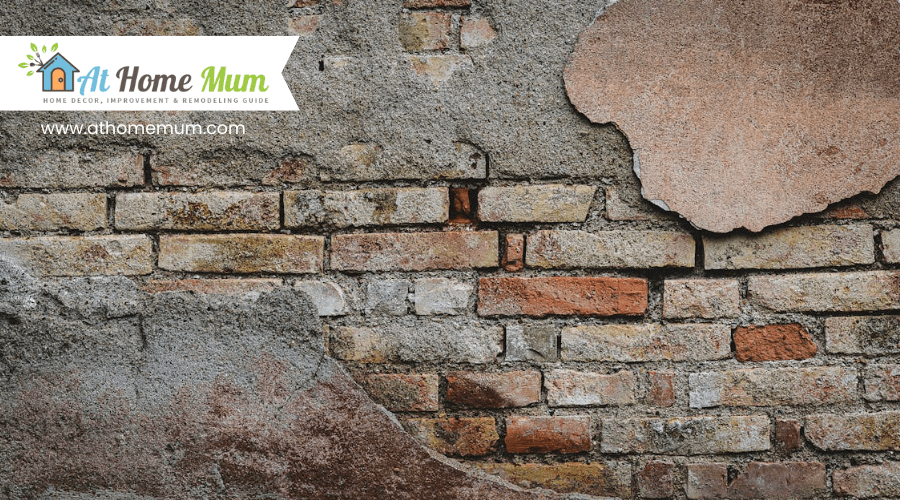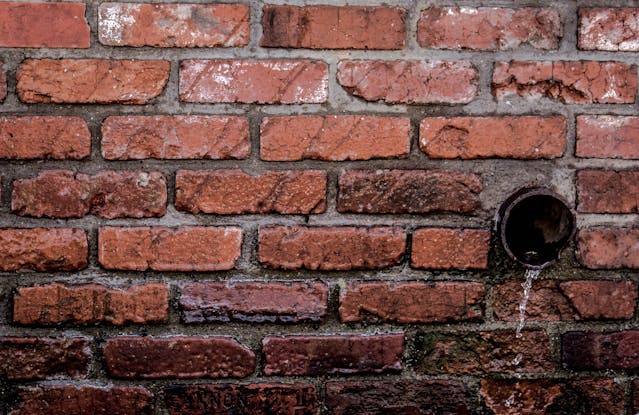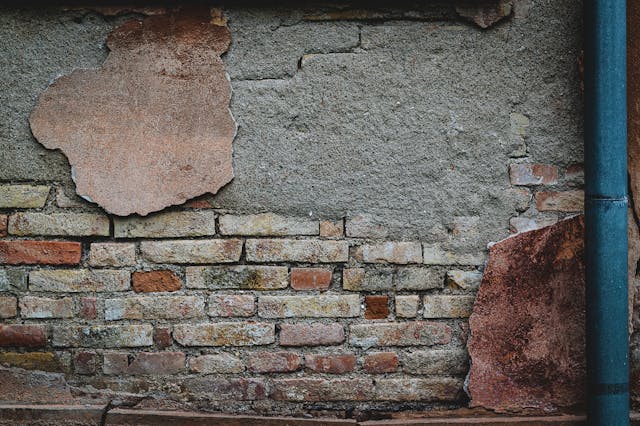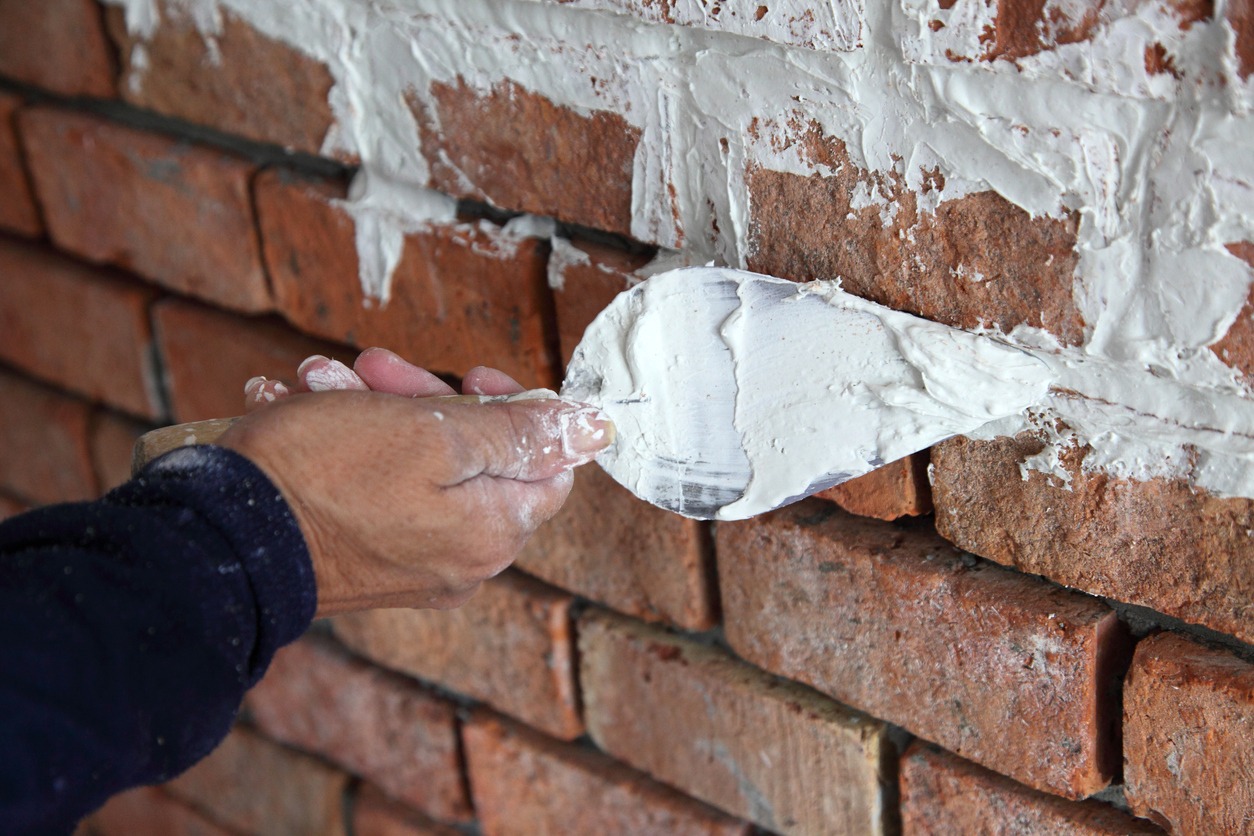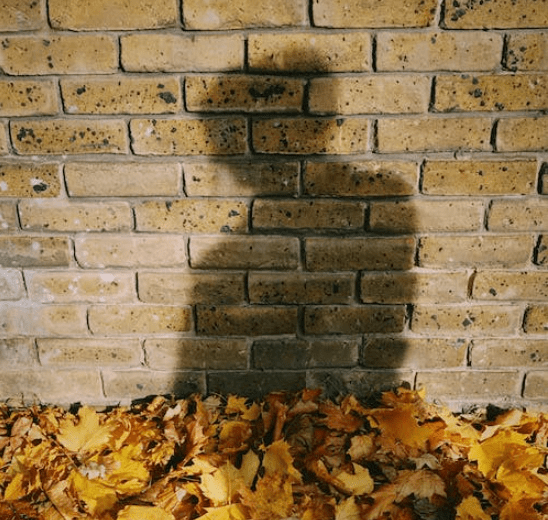Brick walls are renowned for their strength and longevity, often giving the impression of indestructibility. Over time, however, homeowners may encounter cracks in their brick structures. It is essential to distinguish between the types of cracks, as they can have varied implications regarding the wall’s integrity and the safety of the structure. Small, thin cracks are commonly seen and typically do not signal severe problems; they may be caused by slight settlement or changes in temperature and humidity.
On the other hand, larger cracks in brick walls demand closer attention. They could be symptomatic of foundation issues or structural damage that may require intervention. Shifting soil, thermal expansion, and inadequate foundation support are among the chief causes of significant cracking. Observing the pattern and direction of the cracks can provide insights into the underlying issues: for example, vertical or stair-step cracks are often related to settlement, while horizontal cracks might indicate lateral pressure on the wall.
Regular inspection of brick walls for new or expanding cracks is vital for maintaining structural health. Identifying the cause of the cracking is the first step in determining the severity and necessary actions to preserve the integrity of a brick wall. Repair methods vary based on the crack type, and in some cases, simple fixes can be applied, while others may require professional assessment and intervention to ensure the long-term stability of the structure.
Identifying Different Types of Brick Wall Cracks
The integrity of a brick wall can be assessed by examining the nature and direction of the cracks present. Such evaluations often reveal potential underlying issues, ranging from cosmetic to structural concerns.
Vertical Cracks
Vertical cracks in brick walls extend straight up and down or are slightly diagonal within 30 degrees of vertical. They are often the result of the wall’s settlement or thermal expansion and contraction. While they may not immediately threaten structural integrity, monitoring for changes in size or pattern is crucial, as these can indicate more serious foundation movement over time.
- Cosmetic Vertical Cracks: Small and stable; typically less than 1/16 inch wide.
- Potential Structural Vertical Cracks: Wider than 1/16 inch; progressive widening may require professional assessment.
Horizontal Cracks
Horizontal cracks run parallel to the ground. They are a concerning sign, usually indicating a serious issue with foundation settlement or lateral pressure from the surrounding soil. This type of crack can compromise the structural integrity of a brick wall, making it essential to seek immediate structural evaluation.
- Signs of Foundation Movement: Horizontal cracks that are visible and run the length of the wall.
- Structural Concerns: Often accompanied by bowing of the wall; signifies immediate attention required.
Diagonal Cracks
Diagonal cracks typically run at a steep angle and signify differential settling of the foundation. This means that one part of the structure is moving differently from another, placing stress on the wall’s integrity. Such stress points can lead to further damage if not stabilized and can be indicative of significant foundation issues.
- Cosmetic Diagonal Cracks: Small, narrow, contained, and not indicative of immediate structural issues.
- Structural Diagonal Cracks: Larger, wider than 1/16 inch, and spreading; denote urgent need for professional evaluation.
Each type of crack provides clues to the condition of the brick wall, and understanding these can guide property owners in maintenance or the need for professional repair services.
Common Causes of Cracks in Brick Walls
Cracks in brick walls can emerge from various sources, often relating to environmental interactions and structural processes. Homeowners may identify these cracks by observing changes in their walls over time.
Moisture and Water Infiltration
Water is a pervasive cause of deterioration in brick walls. Moisture can seep into bricks and mortar, causing them to expand. When the water evaporates, the materials contract. This cycle of absorption and evaporation over time can lead to cracking. Proper drainage and sealing are critical to protect against water-related damage.
Thermal Expansion and Contraction
Bricks and mortar respond to temperature changes by expanding and contracting. When exposed to thermal expansion, materials can crack if there is insufficient space to accommodate these shifts, or due to tension if different parts of the wall expand at different rates.
Natural Disasters and External Forces
External forces such as earthquakes, severe storms, or heavy winds from natural disasters can impart significant stress on brick walls. The lack of reinforcement in older masonry can make walls more susceptible to such forces, potentially leading to cracks.
Foundation Settlement and Subsidence
Settlement and subsidence involve the downward movement of a building’s foundation. These movements can be uniform or differential, with the latter often causing more prominent cracking due to uneven tensions in the brickwork. Monitoring for signs of settlement can aid in early detection and remediation.
Analyzing the Severity of Brick Wall Damage
The distinction between superficial and structural damage is essential in evaluating the integrity of brick walls, with specific inspection techniques necessary for accurate assessment.
Superficial Versus Structural Damage
Superficial damage typically presents as small, hairline cracks that do not compromise the wall’s structural stability. These are often cosmetic and result from minor settlement, thermal expansion, or moisture changes. In contrast, structural damage is characterized by larger, more pervasive cracks or shifts, especially in load-bearing walls or foundations. This type of damage can undermine the structural integrity of the building and may require immediate intervention.
- Superficial damage signs:
- Small, hairline cracks
- Localized deterioration
- Non-uniform color changes
- Structural damage signs:
- Cracks wider than 1/4 inch
- Cracks that are zigzag and follow mortar joints
- Brick veneer cracks that suggest underlying issues
- Evidence of movement in load-bearing walls
Inspection and Assessment Techniques
To accurately assess brick wall damage, one must employ a range of inspection techniques. Visual examination is the initial step, looking for patterns and locations of cracks. In-depth inspection often involves tools like masonry probes or boroscopes to evaluate the extent of internal deterioration. Foundations should be inspected for any signs of settlement or shifting. In cases of suspected structural damage, it is prudent to consult a structural engineer who can employ advanced techniques, including:
- Non-destructive testing:
- Sonic testing for structural integrity
- Thermal imaging to detect internal defects
- Destructive testing (if necessary):
- Removing sections of the wall to look for hidden damage
- Soil analysis around foundations
The appropriate response to findings hinges on a thorough and accurate assessment, distinguishing between benign issues and those that threaten the building’s safety.
DIY Repair Methods for Minor Cracks
Repairing minor cracks in brick walls can be a straightforward process if one has the right tools and follows a clear step-by-step approach. This section outlines the necessary tools and materials required for the repair and provides a detailed repair guide.
Gathering Necessary Tools and Materials
Before starting the repair process, it is essential to have the following tools and materials on hand:
- Chisel
- Hammer
- Wire brush
- Mortar or cement mix
- Bucket for mixing mortar
- Trowel
- Sponge
- Water
Mortar or cement is used to fill in the cracks, while a chisel and hammer are necessary for removing any loose material. A wire brush helps in cleaning the area, and a trowel is used to apply and flatten the mortar.
Step-by-Step Repair Guide
- Inspect the Wall: Look for small cracks that need repair.
- Remove Loose Material: Use the chisel and hammer to carefully remove any loose bricks or mortar. Avoid causing additional damage to the wall.
- Clean the Cracks: With a wire brush, clean out any dust, debris, or plant growth from the cracks.
- Wet the Wall: Lightly dampen the wall area around the crack with water to help the new mortar adhere better.
- Prepare the Mortar: Mix the mortar or cement in a bucket according to the manufacturer’s instructions.
- Apply Mortar: Use the trowel to apply the mixed mortar into the crack. Be sure to press firmly to fill the crack entirely.
- Flatten the Mortar: After filling the crack, use the flat side of the trowel to smooth and flatten the mortar, ensuring it is level with the brick surface.
- Finish the Repair: With a damp sponge, gently clean off any excess mortar from the brick face and smooth out the mortar line.
- Curing: Allow the mortar to cure and set as per the manufacturer’s guidelines before exposing it to any weather conditions.
By following these steps, homeowners can confidently address minor cracks in their brick walls, preventing further damage and maintaining the integrity of their home’s facade.
Professional Solutions for Major Brick Wall Repairs
In cases of significant damage to brick walls, professional assessment and repairs are crucial. Professionals provide expertise in structural integrity, employ precise techniques for reconstruction, and can offer a reliable repair estimate, ensuring a durable fix to the problem.
When to Call an Expert
An expert should be called for a brick wall repair when:
- Structural Damage is observed: This includes bulging, extensive cracks, or signs of wall collapse.
- Water Infiltration is suspected: Persistent moisture issues leading to weakened mortar and brick shifting.
- Warning Signs are present: Such as stair-step cracking, efflorescence, or loose bricks which indicate deeper problems.
A professional inspection will determine the extent of the damage and the necessary steps for repair.
Understanding Repair Costs and Estimates
The cost of brick wall repair is influenced by:
- Extent of Damage: Minor cracks require less work, whereas extensive damage might need reconstruction.
- Materials Used: High-quality bricks and mortar match the existing wall and ensure a longer-lasting repair.
- Labor: Skilled labor costs may vary by location and complexity of the job.
An estimate generally includes:
| Expense Category | Description |
|---|---|
| Labor | The cost of the skilled professionals’ time. |
| Materials | Bricks, mortar, and other supplies. |
| Equipment | Scaffolding, mixers, or other necessary tools. |
| Miscellaneous | Possible permits or additional services. |
A detailed written estimate should outline all these costs before work begins.
Preventative Measures to Avoid Brick Wall Cracks
Taking proactive steps can significantly reduce the incidence of cracks in brick walls. Key areas of focus should involve moisture management, routine maintenance, and protection against harsh weather conditions.
Improving Drainage and Addressing Moisture
Effective drainage systems are crucial in preventing water accumulation around brick structures. One should:
- Install gutters and downspouts to direct rainwater away from brick walls.
- Ensure proper grading of the landscape to prevent standing water near foundations.
- Address any plumbing leaks swiftly to prevent water from weakening brick walls.
Regular Maintenance and Monitoring
Periodic maintenance checks help identify early signs of potential problems. Homeowners should:
- Inspect brick walls for early signs of damage or stress.
- Repoint and replace damaged mortar to maintain wall integrity.
- Consider the proximity of trees, as roots can grow to disturb the foundation, leading to cracks.
Shielding Walls from Natural Elements
Brick walls can be vulnerable to climate-related stress. One can shield them by:
- Using sealants to inhibit moisture penetration in areas exposed to frequent wet conditions.
- Employing windbreaks or strategic landscaping to reduce wind pressure during storms.
- Choosing bricks and construction methods suited to the local climate can avert damage from temperature extremes.
Impact of Environmental Factors on Brick Walls
Environmental influences such as soil composition and climate events play a crucial role in the integrity of brick walls. These variables can induce alterations and damage over time.
Effect of Soil Conditions and Landscaping
Brick wall stability is profoundly impacted by the underlying soil conditions. Soil subsidence is a common issue where the ground compresses or settles, causing brick walls to move and crack. This is particularly noticeable with reactive soils, which expand and contract depending on moisture levels. For example, heavy rain can lead to soil expansion, while a drought may cause soil to shrink. Additionally, tree roots can grow beneath foundations, disturbing the soil and leading to uneven support for brick structures.
Influence of Climate and Weather Events
Climate and weather events also have a significant impact on brick walls. Temperature fluctuations cause bricks and mortar to expand and contract, potentially leading to cracks. Severe weather events, such as earthquakes, floods, and hurricanes, exert stress on buildings. Earthquakes can trigger immediate catastrophic damage, while floods and hurricanes may erode the ground or saturate bricks, weakening the walls over time. The proximity to the ocean can expose brick walls to salt spray, which over time degrades the mortar. It’s crucial for brick walls in such environments to have appropriate control joints to mitigate damage from thermal expansion.
The Aesthetic and Functional Importance of Brick Walls
Brick walls serve not only as a fundamental structural element in masonry construction but also play a significant role in defining the aesthetic character of a property. Both their durability and visual appeal contribute greatly to building design.
Evaluating Brick Wall Contributions to Property Appeal
Aesthetic: The use of brickwork in the construction of a property’s façade adds a timeless elegance and charm that is highly sought after. A brick veneer, for instance, can elevate a property’s exterior with its rich textures and variety of color options, making it a popular choice for both traditional and modern designs.
Brick Masonry: It embodies an artisanal quality that is often associated with high-end construction. The craftsmanship involved in laying bricks is evident in structures around the world, highlighting the importance of skill and attention to detail in creating a visually appealing masonry.
The Role of Brick Walls in Building Durability
Durability: Brick walls are renowned for their long lifespan, often lasting over a century with minimal maintenance. As part of the building’s envelope, they provide resistance to fire, pest damage, and extreme weather conditions. Their load-bearing capabilities allow them to not only support the weight of the structure above but also distribute forces evenly, contributing to a building’s overall stability.
Load-Bearing Wall: As a critical structural element, a brick load-bearing wall supports the building it encases by transferring loads from roofing, floors, and other elements directly to the foundation. Its strength and robustness are vital to the integrity and longevity of a building, underscoring the functional dimension of brick walls in architectural design.
Through their dual role in aesthetic enhancement and physical resilience, brick walls remain an integral component of construction that significantly impacts both the appeal and the endurance of structures.

